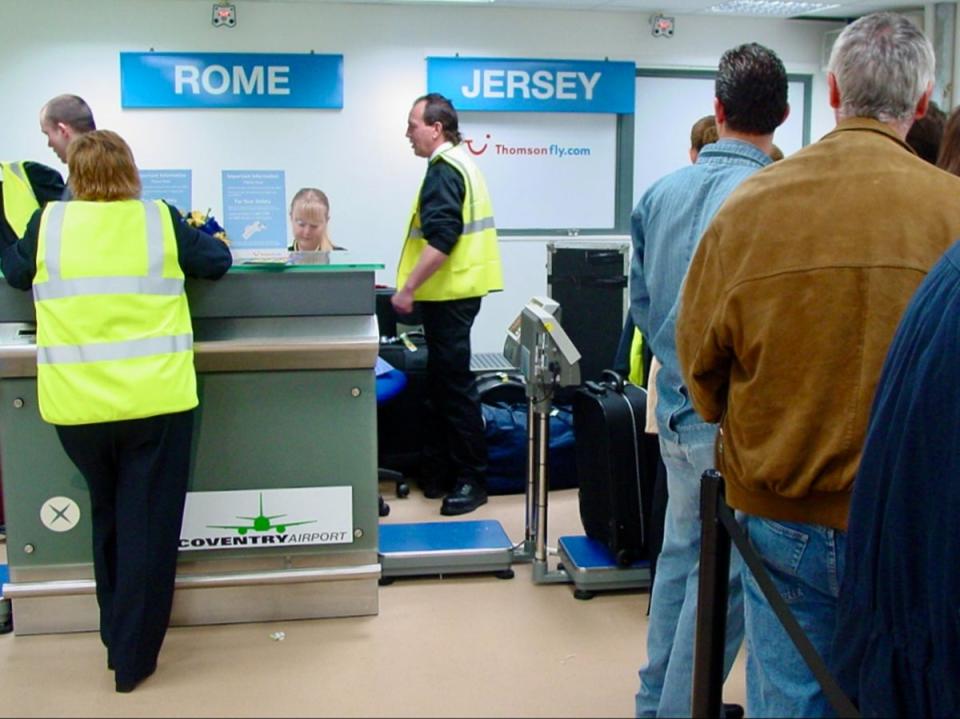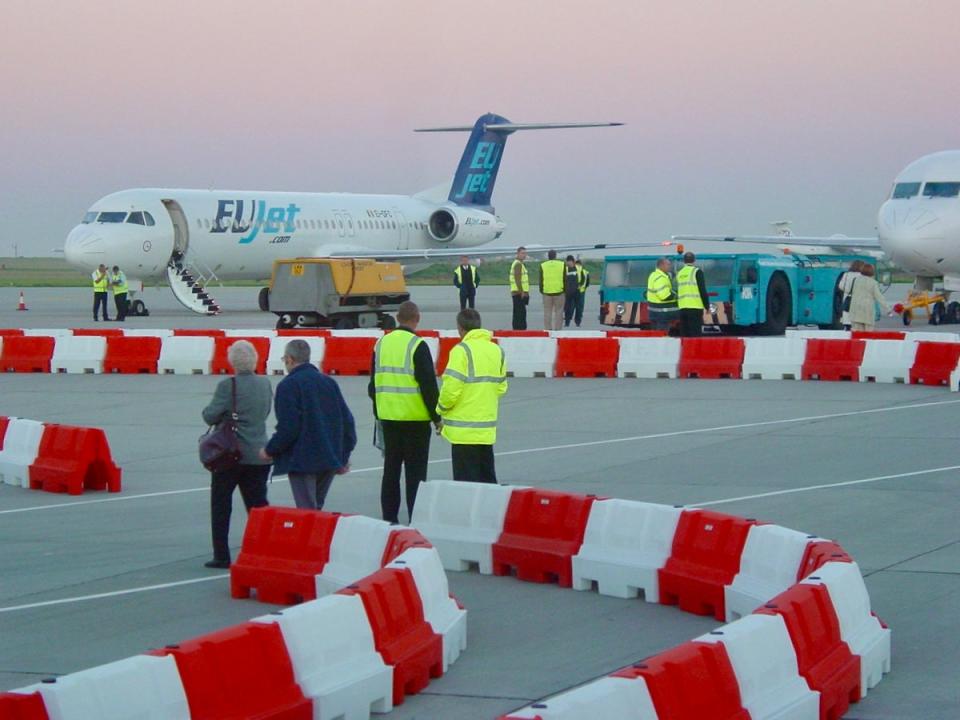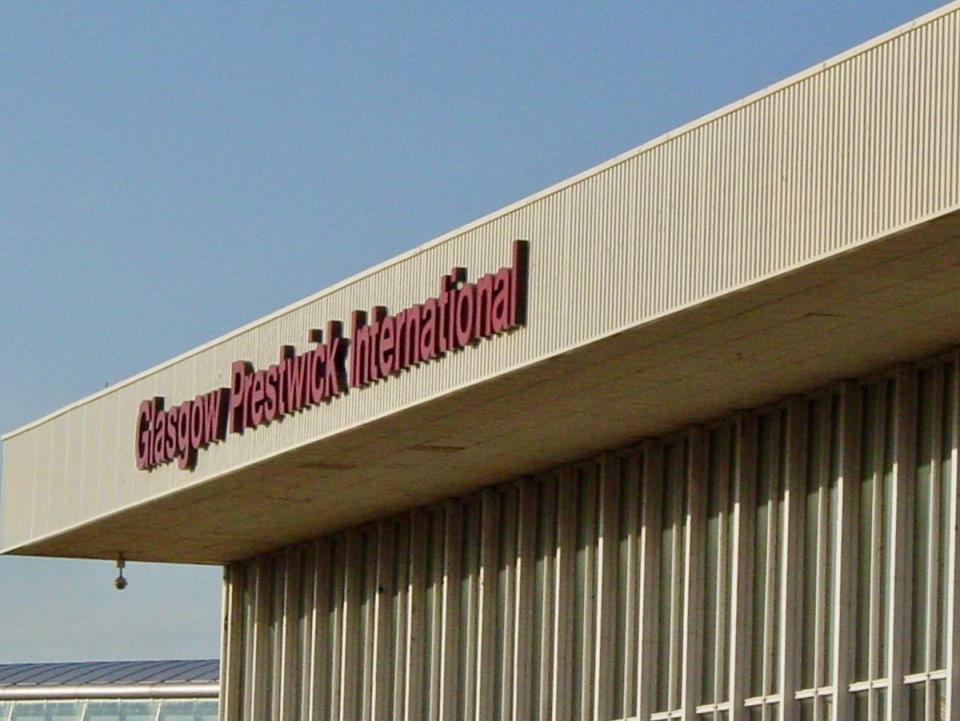These are the UK’s ‘ghost airports’ – which could come back to life?

Some UK airports are highly successful, with Heathrow, Gatwick, Manchester and Stansted all bouncing back strongly after the Covid pandemic. The UK’s busiest airport, Heathrow, handled a record number of passengers in February: an average of 200,000 per day.
Yet some smaller British airports do not even register 200,000 travellers in a year. Many rely on public subsidies to survive, for social and economic reasons. Highlands and Islands Airports, which looks after 11 airports in Scotland, received £56m in subsidy in the latest financial year – a whacking £40 for every passenger who used its facilities.
Other airports are not so lucky. This century, six English airports have closed – most recently Doncaster Sheffield. Sixteen months after the final passengers departed, the South Yorkshire airport is the subject of a rescue bid.
So which airports are toast – and which could be revived? These are the key questions and answers.
The six airports that have closed to commercial flights this century
Sheffield City
Flights at the first South Yorkshire airport began in 1998 with domestic links to London City, Belfast City and Jersey, and international connections with Amsterdam, Brussels and Dublin. These routes were progressively cancelled, with the final flights to and from Belfast City in August 2002.
Could it reopen? No. The site is now part of Sheffield Business Park.
Coventry
This is a weird one. Baginton aerodrome, southeast of Coventry, has been going since 1936. In 2004, the giant tour operator Tui decided to base a new budget airline, Thomsonfly, in Coventry – and bought the airport.
The thinking was that operating from its own airport would be cheaper and easier than using Birmingham (13 miles west) or East Midlands (33 miles north).
The facilities comprised a jumble of temporary buildings. Thomsonfly, a belated and botched response to the success of easyJet and Ryanair, duly took off, and over the next four years there was quite a Mediterranean-focused network from Coventry. Even Wizz Air came in with flights to Gdansk and Katowice. But in 2008, after the High Court turned down plans to build a permanent terminal, Thomsonfly went away. Permanently.
Tui now has a flourishing presence at Birmingham airport, though it now faces competition from easyJet as well as Ryanair and Jet2.
Could it reopen? Coventry airport continues to function as a general aviation aerodrome for small aircraft. There are no plans for a commercial revival.

Plymouth City
The airport north of the city centre opened in 1925. Like many smaller airports, it was dropped by British Airways during a cull on domestic routes. On the one occasion I used it, in 2004, the experience was calm – with only nine passengers on my Air Southwest flight to Gatwick (179 miles away) via Newquay (39 miles away). Other links served Glasgow, Manchester, Newcastle, Jersey and Cardiff – just 75 miles away by air, but more than twice as far by road or rail. By 2011, the airport had closed.
Could it reopen? Certainly, according to Plymouth city council leader Tudor Evans. Last month he said: “We are a major city, we have ambitions to grow and thrive and an airport must be part of that story.”
Manston
What could possibly go wrong? The former RAF Manston is located in the far northeast of Kent, on the Isle of Thanet. That gives Manston airport a big advantage: Frankfurt, Luxembourg and Amsterdam are at least 20 minutes closer to Manston than to Heathrow. A lightly used airport at an extreme part of Kent, 66 miles from the centre of London, avoids congestion on the ground and in the skies over London – the busiest air-traffic control space in the world.
Access from the capital on the M2 and the A299 (the motorway’s continuation into Thanet) is easy. Thanks to the HS1 rail line, Ramsgate station is just 79 minutes from London St Pancras, with the airport about five minutes beyond.
Yet repeated attempts to run scheduled flights from Manston have failed. In September 2004, I was aboard the first EUjet flight, to Dublin; the following July, the airline went bust. Since then Flybe has collapsed not once but twice. But before it did so the regional carrier axed its routes from Manston to Edinburgh and Belfast.
KLM’s Amsterdam service took off from Manston, but not financially. The final scheduled flight from Manston departed for the Dutch capital on 9 April 2014. Since then, the airport has had quite a lucrative sideline as a standby lorry park for Brexit-related traffic chaos in Kent.
Could it reopen? Yes, according to RiverOak Strategic Partners, whose aim is “reviving Manston airport as a successful and profitable airfreight hub, of national significance, with complementary passenger and engineering services”.

Blackpool
The year 2014 wasn’t great for small UK airports. As Manston shut down, Blackpool airport on the Lancashire coast was going through its death throes in terms of scheduled flying. Squire’s Gate airport had an interesting history. Over the years many routes had come and gone including a frequent Ryanair jet link with Stansted, a Tui charter programme to the Med, and a prop-jet connection to Biggin Hill airfield on the London-Kent border. The restoration of direct trains from Blackpool to London appears to have been the death knell. The last passenger flights departed in October 2015.
Could it reopen? Blackpool is open and thriving for general aviation and business flights. In 2022, it handled more flights than Teesside, Leeds Bradford, Bournemouth and Southampton. But the prospects for more passenger flights with Manchester airport just 85 minutes by direct train look bleak.
Doncaster Sheffield
RAF Finningley, six miles from Doncaster and 19 miles from Sheffield, closed in 1995. A decade later, it reopened as Robin Hood airport – with Tui once again a keen proponent of a new, low-cost departure point for UK holidaymakers. But Doncaster Sheffield has four competing airports within an hour’s drive. It is 28 miles from Humberside, 38 miles from Leeds Bradford, 46 miles from East Midlands and 53 miles from Manchester. DSA, as it had become, closed in 2022. The owner, Peel Group, said at the time: “No tangible proposals have been received regarding the ownership of the airport or which address the fundamental lack of financial viability.” Promises by the then-prime minister Liz Truss to “protect this airport and this infrastructure” had no effect. The last flights touched down in November 2022.
Could it reopen? Yes. The mayor of Doncaster, Labour’s Ros Jones, has signed a deal for the local council to take over the airport. But it is not clear which airport operator might be interested in running DSA, or which airlines might fly there.
On financial life support
Each of the nations of the UK has an airport that is kept afloat through heavy subsidies.
Prestwick, Scotland
This wonderful airport, southwest of Glasgow, is celebrated as the only British soil on which Elvis Presley set foot – during a refuelling stop for a US military flight from Germany to the US. For decades Prestwick was a prime transatlantic airport, with British Airways offering daily departures to New York. But its location on the lovely Ayrshire coast is tricky for many people in Scotland, and routes gradually eroded. In October 1995, Ryanair took the revolutionary step of opening a new domestic route in Britain, from Prestwick to London Stansted, for £19. Ryanair is still the only commercial operator at Prestwick, typically with two or three flights per day. The Scottish government owns Prestwick, and “it remains ministers’ long-term intention to return Prestwick airport to the private sector at the appropriate opportunity”.

Teesside, England
The airport whose railway station had only two trains a week was a basket case when Tees Valley mayor Ben Houchen brought it back into public ownership rather than allow Peel Holdings to flatten the site and build houses. Teesside was the first airport in the UK to scrap the 100ml limit on liquids in hand luggage. Apart from that, the main excitement is the twice-daily Amsterdam link and occasional Ryanair flights. Last year the airport lost £2.26m – representing exactly £10 per passenger.
Cardiff, Wales
Over the past two decades, passenger numbers at Cardiff have roughly halved, while Bristol airport now handles about twice as many in the same time frame. The capital’s airport, southwest of the city, is struggling to attract passengers back to pre-pandemic levels. While almost every UK airport grew in 2023 compared with a year earlier, the latest figures from the Civil Aviation Authority show a slight drop at Cardiff – with only 837,000 passengers using the airport.
Losses totalled £4.5m in the year to March 2023, with the Welsh government making a grant of £5.3m.
City of Derry, Northern Ireland
“CoDA” is a superb gateway to the city of Derry/Londonderry, as well as County Donegal in the republic. But as the third Northern Ireland airport, after Belfast International and George Best Belfast City, it has always faced challenges. Keeping the airport going costs over £3m annually, and the local council is seeking further funding from Stormont.

